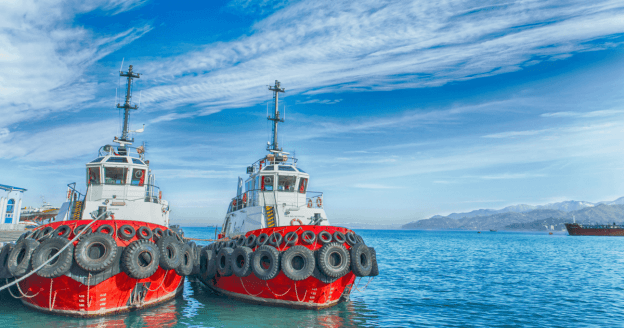When your boat breaks down on the water, you can’t pull over to the curb and wait for help. Despite regularly maintaining your yacht, there are some circumstances you cannot control. Engines and components break down unexpectedly. Fuel gauges break. Batteries fail. If any of these events happen, making preparations beforehand will prove invaluable. When it comes to yacht towing, avoid making these five mistakes.
1. Pay by the hour.
The average towing time for yachts needing assistance is about $325/hour, and the times starts adding up as soon as the tow boat heads out and does not stop until it is back at the dock. It is easier on the wallet to pay for a yacht towing rider premium or an annual service agreement than it is to shell money out of pocket every time you need help.
Some towing services such as Sea Tow and BoatUS offer plans for about $180/annually. They both give priority to members who need assistance during high-volume periods, like during weekends and holidays. Both also have boats in the water waiting on standby, so they can quickly respond to calls.
2. Head out without a tow-line.
Unfortunately, most modern yachts and boats are not equipped for towing. You may end up using your actor rode since many boats don’t have the room to carry a permanent towline. A nylon line is ideal for towing because it eases the loads on the cleats and absorbs the shocks.
However, a nylon towline will be subjected to chafing and loading, which will make it quickly heat up and melt – literally. In this case, make preparations to lubricate the towline. The traditional grease normally used is lard, but if you find yourself stranded and waiting on a tow, use anything slippery you can find on board, such as vaseline, engine oil, and sunscreen.
3. Keep the tow-line long.
If you are in a harbor or somewhere else with calm waters, keep the tow-line short. Towing on the hip of the disabled boat, with the two sterns lashed parallel, requires very tight lines all around. By doing this, the tow-boat acts as an auxiliary engine for the broken-down boat.
It is also very important to make sure to have plenty of fenders in between the boats. If it isn’t done correctly, boats can suffer damage.
4. Blindly following the tow boat.
Once you are being towed back to shore, try to steer directly for the stern of the towboat; this will reduce the strain and make steering easier for the tow boat. If the speed the tow boat is going is making you uncomfortable, speak up and ask them to slow down. After all, you are responsible for the safety of your yacht.
5. Say yes to everyone who needs a tow.
If you decide to tow another boat, you may be opening yourself up to possibly getting sued. In addition, your insurance company most likely has a clause that frees them of liability if you don’t exhibit what they consider to be “good seamanship.”
Remember that you can say no to someone asking for a tow if the weather is bad, if you think your boat is too small, or if you are not 100% confident in your abilities. While you have a legal obligation to save lives, you are not a legal obligation to save property. Stand by the broken-down boat until a towboat arrives to help, but don’t try to rescue beyond your abilities.
Contact The Advantage
Now that you know which yacht towing mistakes to avoid, you are ready to get out on the water. Take a look at our huge inventory in order to find the right yacht that fits your needs


